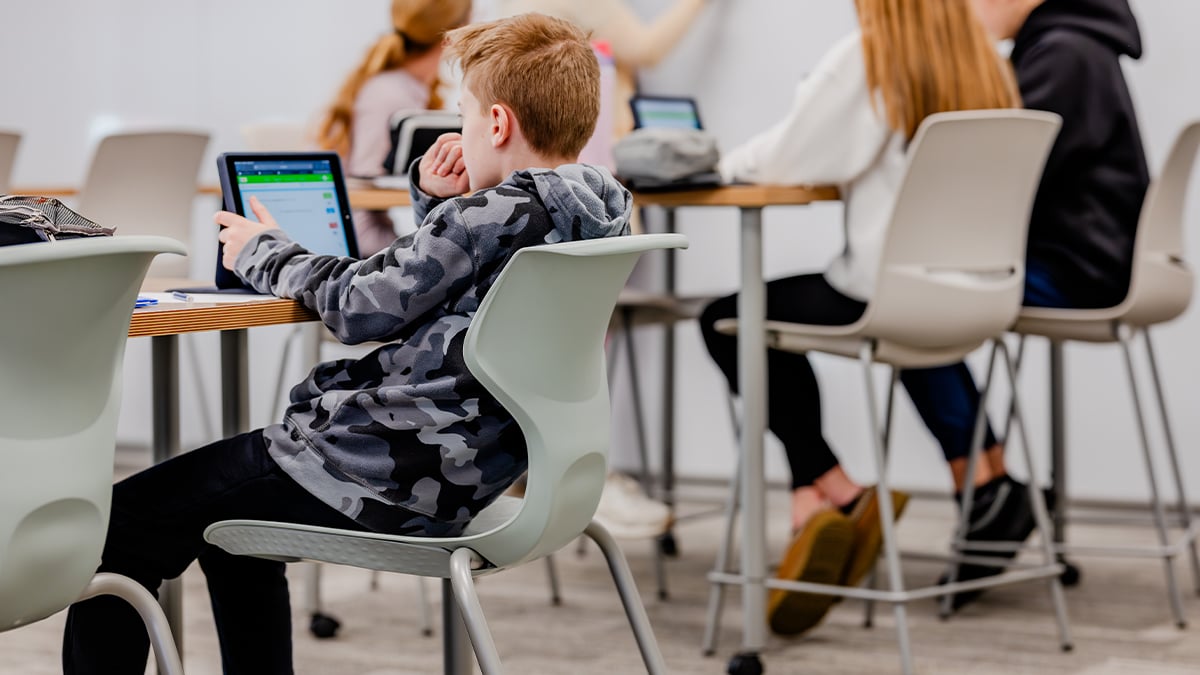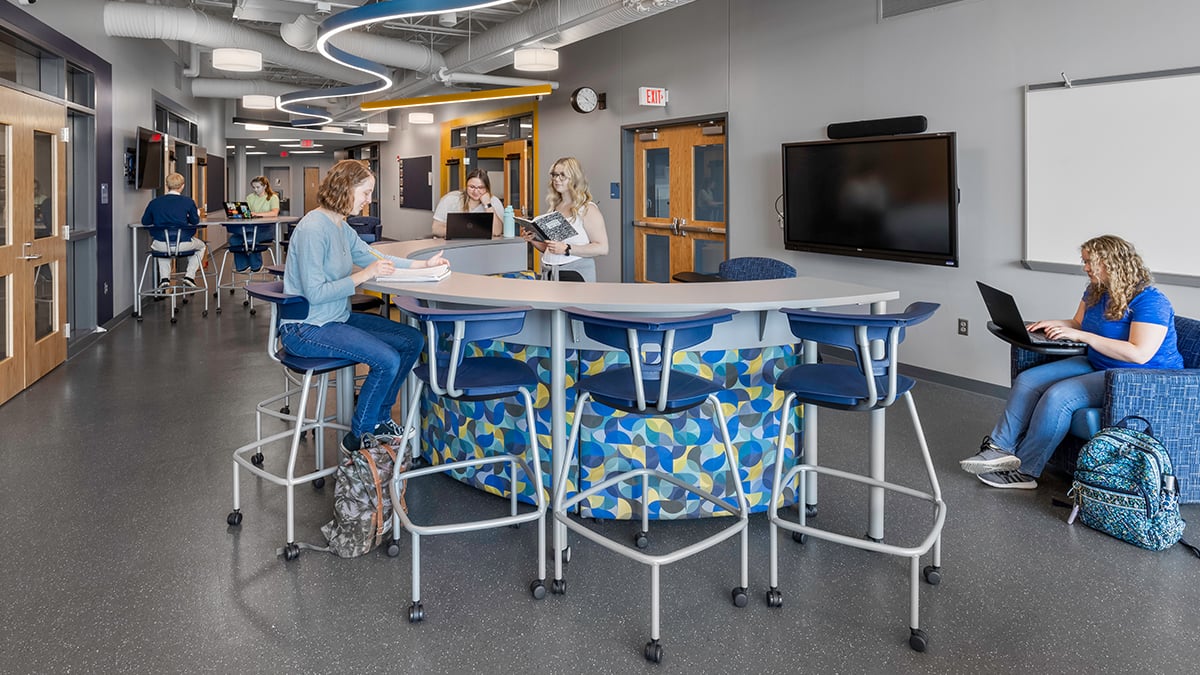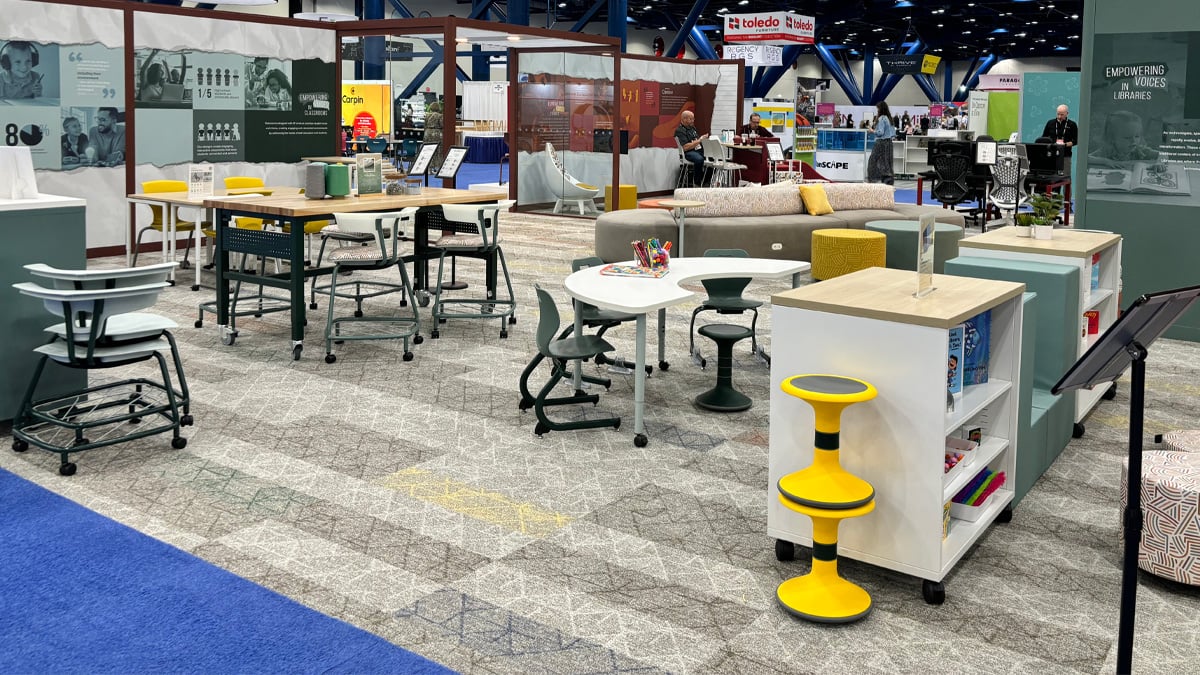Every student benefits from sensory-friendly classrooms. Discover how thoughtful solutions, like Cogni seating, support focus, inclusion, and movement for all learners.
In today’s diverse classrooms, educators face the challenge (and opportunity!) of supporting a wide range of learning styles, needs, and behaviors. This means we will have students who are neurodivergent, have ADHD, or simply learn best through movement and sensory input.
Research has shown that incorporating sensory and tactile elements into classroom design isn’t just beneficial for students with diagnosed learning differences. It enhances focus, engagement, and emotional regulation for all learners.
In this blog, we’ll explore why sensory tools benefit all students—not just those with diagnosed needs—and how Cogni seating helps create more inclusive, engaging classrooms.
Why Sensory Tools Matter for Everyone
While sensory outlets are often associated with supporting students who experience sensory processing challenges, tools like textured surfaces, movement-friendly seating, and tactile fidget tools benefit every student in the room.
These features help manage energy levels, reduce anxiety, and improve attention spans, which is something even adults could benefit from.
A study in Frontiers in Psychiatry found that sensory integration strategies can improve learning outcomes in students with neurodevelopmental differences, but movement and touch-based tools also support brain activation and mental clarity for all students, especially during high-energy or long-duration learning sessions.
Featuring a rounded base for an active sit, Ricochet stools offer freedom to fidget, which keeps bodies and minds engaged.
Incorporating tactile engagement in the classroom, such as fidget tools or flexible seating, gives students discreet ways to regulate themselves. Those allowed to engage in subtle tactile activities are more likely to remain focused and be less disruptive.
It’s not about distraction; it’s about redirection. When students can move or engage their senses appropriately, they can stay present and tuned into learning.
Ruckus chairs are uniquely designed with non-directional, 360-degree seats to support student collaboration and engagement.
Cogni Supports Sensory Engagement & Focus
This is where Cogni classroom seating shines. Designed as a tool for engagement, Cogni features a tactile surface built right into the underside of the seat, functioning as a subtle, built-in fidget tool. Students can run their fingers along the texture for calming sensory input without ever leaving their seat or accessing a different, often distracting, spinner or toy.
Cogni chairs feature a patent-pending sensory surface to promote tactile engagement for all learners.
In addition, Cogni’s flexing frame and articulating back encourage movement in a natural, controlled way. Students can shift, lean, or bounce slightly without disrupting other learners—allowing them to stay engaged while their bodies stay active.
When educators intentionally incorporate sensory-friendly furniture like Cogni, they foster a classroom that’s inclusive, responsive, and adaptable. Research from the National Library of Medicine supports that these thoughtful design choices lead to improved behavior, engagement, and learning outcomes across the board.
Rather than labeling sensory tools as accommodations only for certain students, it’s time to recognize them as foundational features of good classroom design—just like lighting, airflow, or acoustics.
The Future of Student Engagement Starts with Being Aware
Looking to the future of education, it’s clear that creating environments where all students can succeed starts with physical space.
As educators, we know the power of choice and inclusion. When we provide options for movement, tactile engagement, and choice in how students can sit and learn, we send a powerful message to students that says, “This classroom is for you.”
By integrating thoughtful sensory solutions like Cogni and others, educators can unlock new levels of focus, ownership, and joy for every student.










